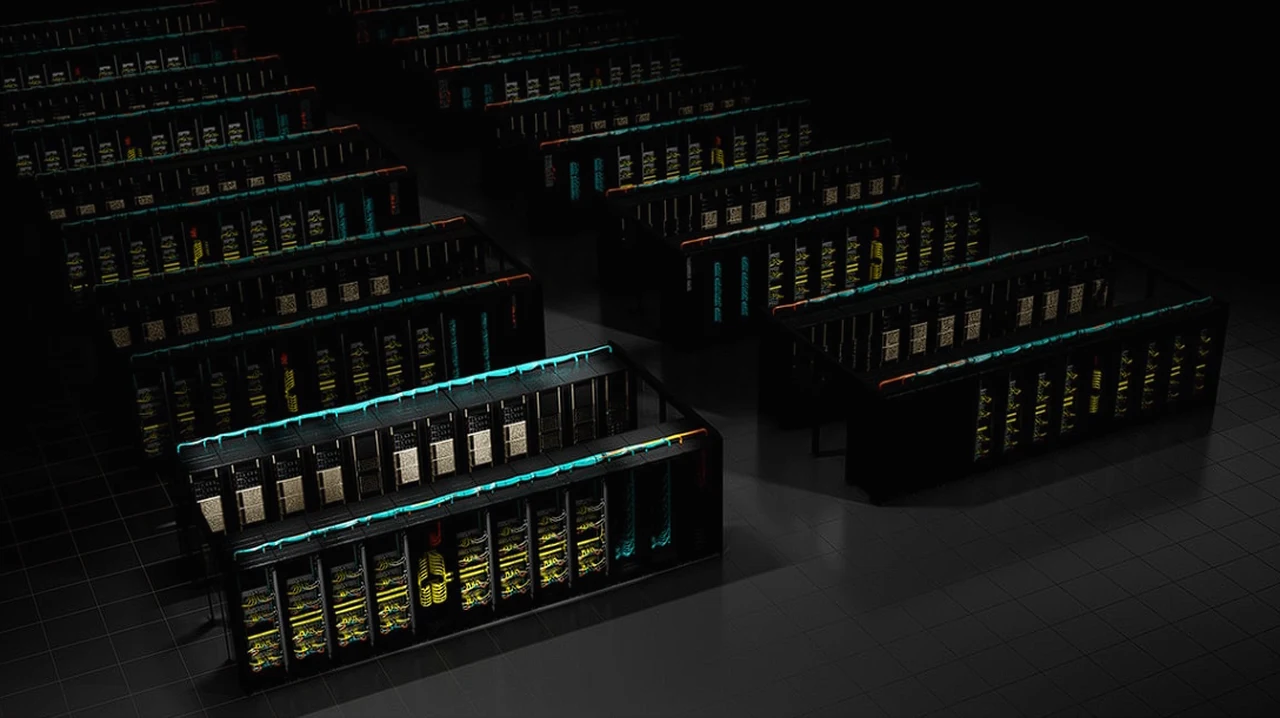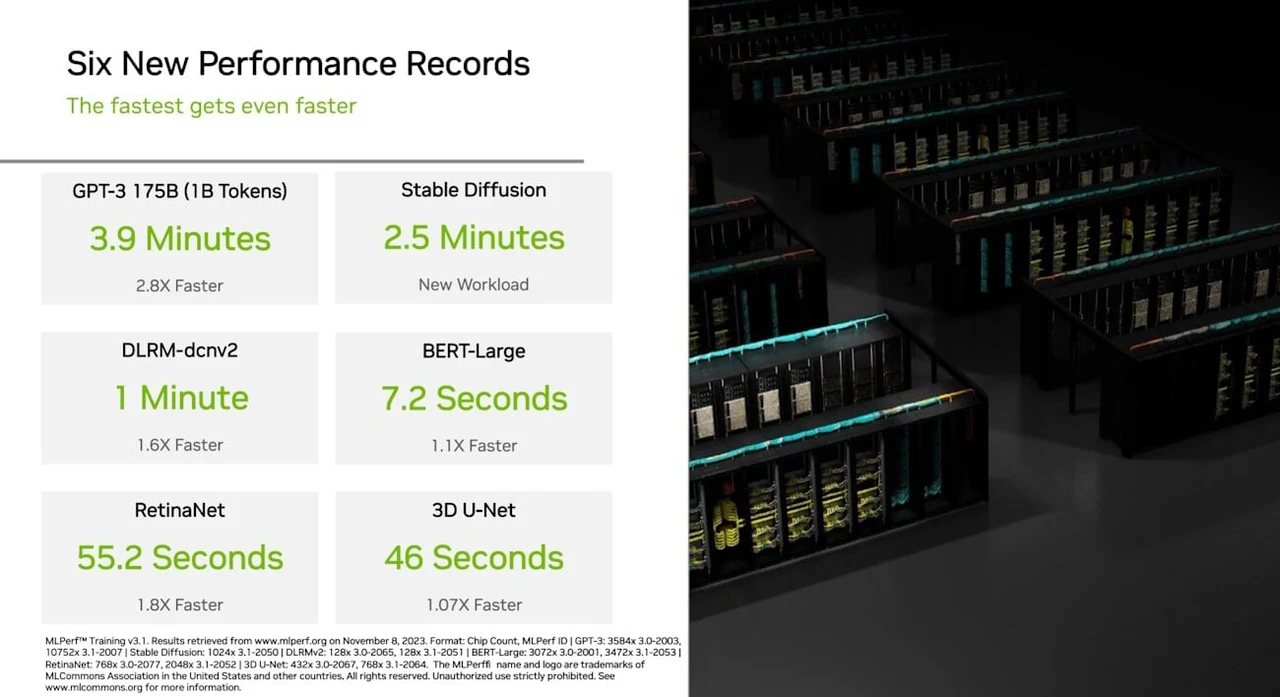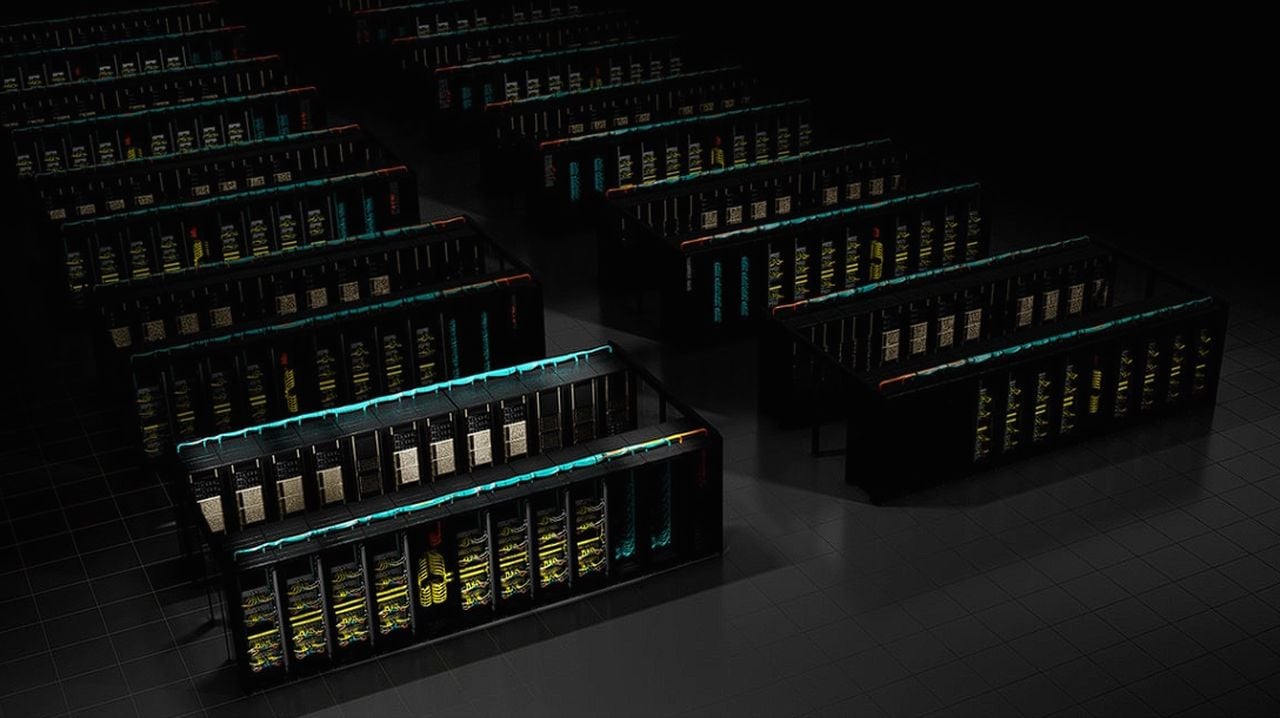
NVIDIA’s AI platform has once again demonstrated its capabilities by setting new records in the latest MLPerf industry benchmarks, a well-regarded measure for AI training and high-performance computing. The AI supercomputer, NVIDIA Eos, powered by a whopping 10,752 NVIDIA H100 Tensor Core GPUs and NVIDIA Quantum-2 InfiniBand networking, completed a training benchmark based on a GPT-3 model in a record-breaking 3.9 minutes. This significant improvement from the previous record demonstrates the potential for faster training times, which can reduce costs, save energy, and speed up product development, making it a game-changer in the industry.
These latest results were achieved by using the highest number of accelerators ever used in an MLPerf benchmark. This achievement underscores NVIDIA’s ability to meet the unique challenges of generative AI for the world’s largest data centers. Eos and Microsoft Azure used a full-stack platform of innovations in accelerators, systems, and software to achieve these groundbreaking results, showcasing the power of collaboration and technological advancement.
Training AI models
In this round, NVIDIA set several new records, further solidifying its position as a leader in the field. In addition to making significant advances in generative AI, the H100 GPUs were 1.6x faster than the previous round’s training recommender models. NVIDIA was the only company to run all MLPerf tests, further demonstrating its commitment to pushing the boundaries of AI technology.

The NVIDIA AI platform was used in submissions this round by eleven systems makers, including industry heavyweights such as ASUS, Dell Technologies, Fujitsu, GIGABYTE, Lenovo, QCT, and Supermicro. This widespread use of NVIDIA’s technology is a clear indication of its robustness, reliability, and acceptance in the industry, demonstrating its potential to revolutionize AI technology.
NVIDIA AI platform
In the MLPerf HPC, H100 GPUs delivered up to twice the performance of NVIDIA A100 Tensor Core GPUs. This performance boost was particularly noticeable when the H100 GPUs trained OpenFold, a model that predicts the 3D structure of a protein, in just 7.5 minutes, showcasing the power and efficiency of NVIDIA’s technology.
Several partners, including Dell Technologies, Clemson University, Texas Advanced Computing Center, Lawrence Berkeley National Laboratory, and Hewlett Packard Enterprise (HPE), made submissions on the NVIDIA AI platform in this round. This collaboration between NVIDIA and these organizations demonstrates the platform’s versatility and applicability across various sectors, highlighting its potential to transform industries.
MLPerf benchmarks
MLPerf benchmarks have received wide support from both industry and academia, with organizations such as Amazon, Arm, Baidu, Google, Harvard, HPE, Intel, Lenovo, Meta, Microsoft, NVIDIA, Stanford University, and the University of Toronto backing them. All the software NVIDIA used is available from the MLPerf repository, ensuring transparency and accessibility for all interested parties, further promoting the democratization of AI technology.
NVIDIA’s AI platform continues to set new standards in AI training and high-performance computing, as evidenced by its latest achievements in the MLPerf industry benchmarks. The platform’s ability to reduce costs, save energy, and speed up product development, coupled with its widespread adoption by system makers and partners, underscores its value and potential in advancing AI technology. This continued success is a testament to NVIDIA’s commitment to pushing the boundaries of AI technology and its potential to revolutionize industries.
Image Credit : NVIDIA
Filed Under: Technology News, Top News
Latest timeswonderful Deals
Disclosure: Some of our articles include affiliate links. If you buy something through one of these links, timeswonderful may earn an affiliate commission. Learn about our Disclosure Policy.

